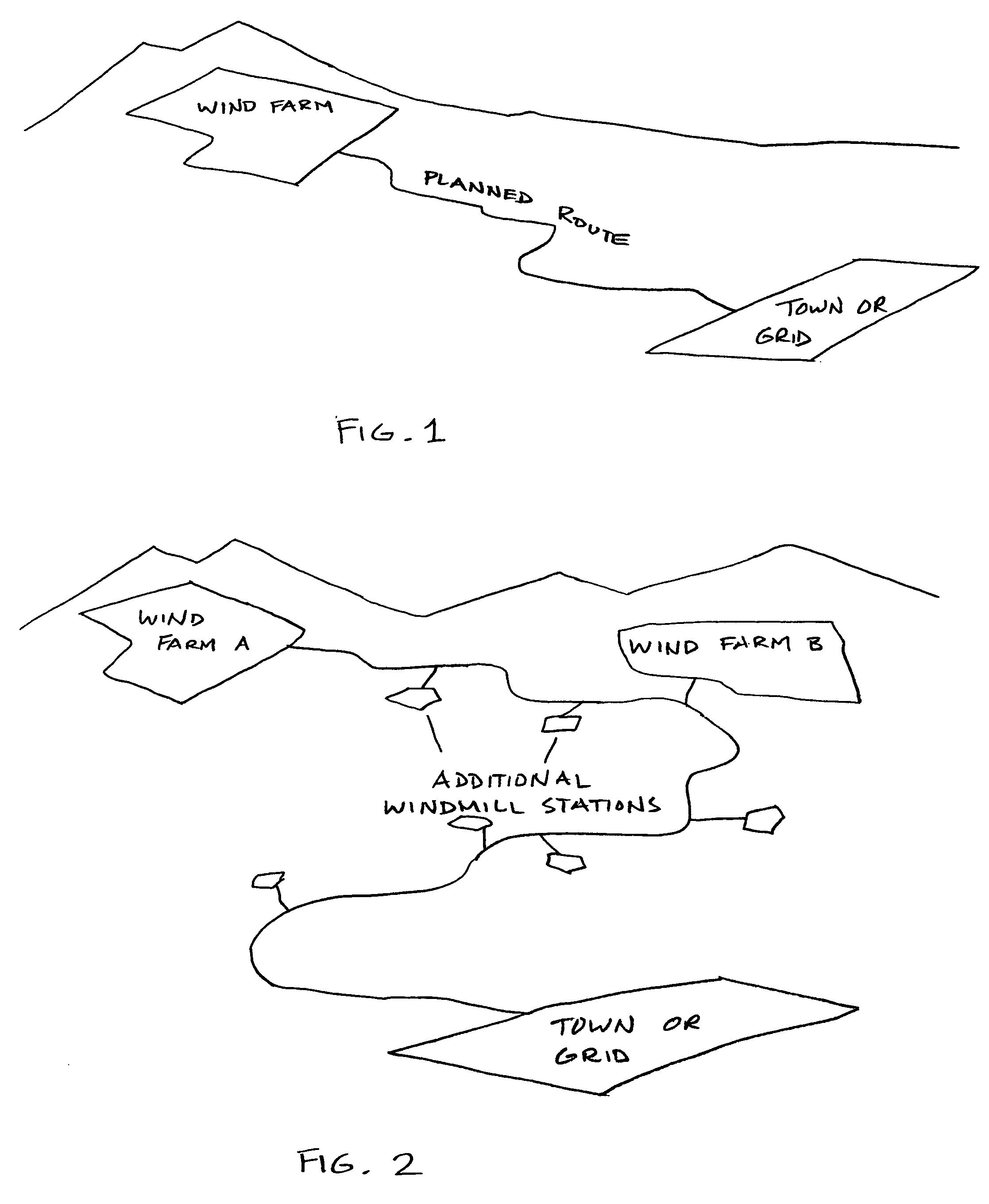Method of storing and transporting wind generated energy using a pipeline system
a pipeline system and wind energy technology, applied in the direction of couplings, fluid couplings, greenhouse gas reduction, etc., can solve the problems of reducing the reliance on oil, such as from foreign sources, becoming an important national issue, and the amount of power that can ultimately be generated, so as to achieve efficient and economic installation of the new pipeline
- Summary
- Abstract
- Description
- Claims
- Application Information
AI Technical Summary
Benefits of technology
Problems solved by technology
Method used
Image
Examples
Embodiment Construction
[0030] The present invention relates to wind powered energy generating and storing systems capable of transporting wind generated energy from areas where wind conditions are ideal, to areas where energy is needed, without having to extend lengthy and expensive power transmission lines to grids or communities, and without having to build expensive compressed air storage tanks, etc.
[0031] The present system preferably comprises selecting an area where the wind conditions are likely to be consistent and predictable, or at least more so than other areas that are available, which would be suitable for generating wind energy. By their very nature, these areas are often located in remote areas many miles from communities where people live, and far from existing power grids. They may, for example, be located in deserts, canyons, offshore areas, and on mountain or hilltops far from civilization. They are also often located where property values are relatively low.
[0032] The present method ...
PUM
 Login to View More
Login to View More Abstract
Description
Claims
Application Information
 Login to View More
Login to View More - R&D
- Intellectual Property
- Life Sciences
- Materials
- Tech Scout
- Unparalleled Data Quality
- Higher Quality Content
- 60% Fewer Hallucinations
Browse by: Latest US Patents, China's latest patents, Technical Efficacy Thesaurus, Application Domain, Technology Topic, Popular Technical Reports.
© 2025 PatSnap. All rights reserved.Legal|Privacy policy|Modern Slavery Act Transparency Statement|Sitemap|About US| Contact US: help@patsnap.com


